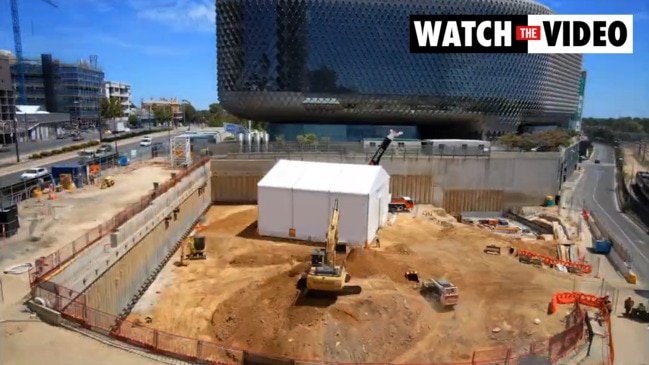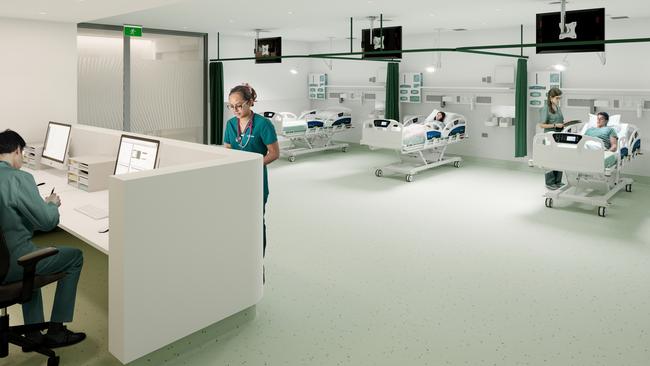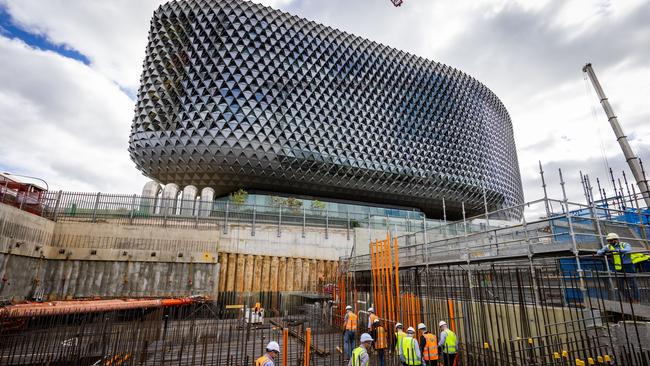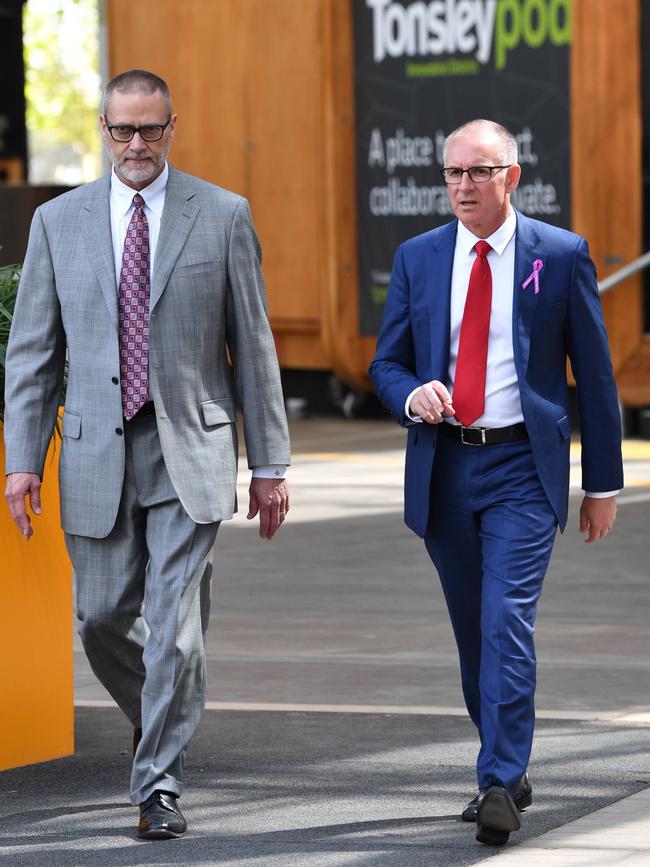Red flags over the $500m Australian Bragg Centre raised seven years ago
In a new twist to the mounting controversy, leaked documents show multiple claims of red flags were raised seven years ago over the ‘likely to collapse’ world-leading Adelaide cancer unit.

SA News
Don't miss out on the headlines from SA News. Followed categories will be added to My News.
A world-leading Adelaide cancer unit faced using unregistered technology and risked a “significant” taxpayer cash blowout if an embattled US firm won a lucrative tender, experts warned.
In a new twist to the mounting controversy, leaked documents show multiple claims of red flags were raised seven years ago about a fortified, four-storey concrete proton therapy bunker under the $500m Australian Bragg Centre.
The South Australian Health and Medical Research Institute project – hailed as a pioneering treatment centre for more than 700 mostly pediatric patients a year – will now likely collapse.
In mid-2017 SAHMRI chiefs, and officials from developer Commercial and General, started exclusive talks with Boston-based ProTom International to build the southern hemisphere’s first such unit after some institute board members hailed a “slam dunk” business case.
But in what well-placed sources say eerily has become reality, executives from one of the world’s leading proton therapy companies warned project leaders of PTI’s “poor track record”.

An internal SAHMRI tender review recommended PTI, which filed for voluntary “Chapter 11” bankruptcy in 2015, over competitors IBA, Varian and Hitachi to win a $68m taxpayer grant.
A SAHMRI spokesman said due diligence was done over 18 months into the deal and it “continues to work with our project partners to achieve the best outcome for this most important project”.
In a scathing December 2018 letter, senior IBA executive Huub van Roosmalen expressed deep “regret” if its competitor won as he penned scenarios that “may, in all likelihood, become reality”.
Mr van Roosmalen, whose multinational company had treated at least 60,000 patients globally over more than 30 years, warned of a “grossly delayed” Protom installation that “far exceeded” contracted timelines and “significant budget overruns”.
He warned its technology was not, at that stage, registered with federal medical regulator the Therapeutic Goods Administration and it would take years to develop Australian clinical skills.
Any live operational system will lag “far behind” other established programs before any gap widened.
“Protom still have zero clinical experience, no patient has been treated on a Protom system,” wrote IBA’s director of strategic accounts. “It is highly unlikely they will ever catch up.
“I’m sure you have been made aware of Protom’s poor track record, their bankruptcy and rescue by a Chinese investor and the serious impact this all created for their first customer, McLaren Regional Medical Center in Flint.”

IBA, he wrote, had created more than 50 such units worldwide and its “solution” would be delivered on time, within budget and with the “highest possible quality” of care.
He concluded: “Our apologies for being so direct but we see the prospect of a poor vendor choice having a significantly negative effect on the Australian PT [proton therapy] community where a high level of medical care should be provided and expected.
“Please do note that this statement is not made lightly, but, on the contrary, is well substantiated.”
The 14-storey Bragg building, formerly SAHMRI 2, which is located in the CBD’s northwest $3.6bn biomed city precinct, built the bunker for PTI machines.
The project involves a public/private partnership with SAHMRI, developer Commercial & General, taxpayers and Dexus property fund.
Hitachi is now in negotiations with Treasury as a potential white knight.

Former PTI chief executive Stephen Spotts, whose company never made a profit before he retired in October 2022, said the IBA criticism was unsurprising.
“Obviously I disagree with much of what IBA says and I’m really surprised that you were able to get (such) correspondence,” he said.
“In typical and competitive situations, a company will send criticisms about other companies. I would vehemently disagree with a lot of what IBA says.
“But the one thing that is indisputable … is in 2018 there had not been patients treated yet with (our) Radiance 330 (machine).
“Obviously that wasn’t true by the time the contract went hard in May of 2020.”
An IBA spokeswoman declined to comment as did a spokesman for PTI, which is subject of a legal gag order.
More Coverage
Originally published as Red flags over the $500m Australian Bragg Centre raised seven years ago





